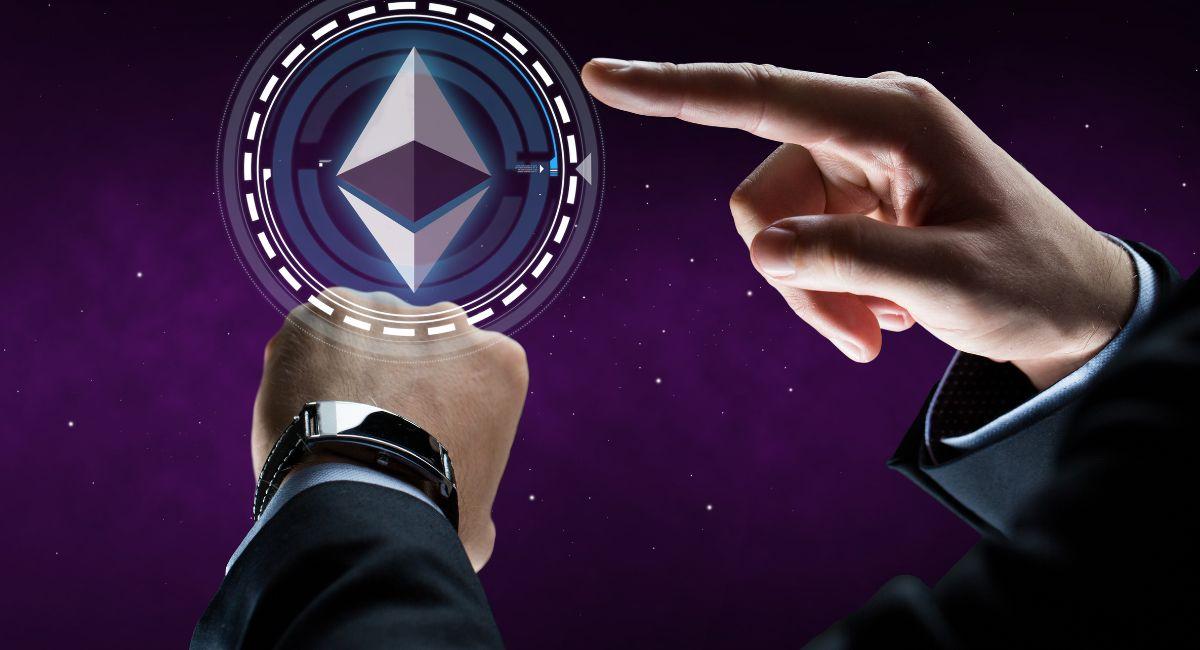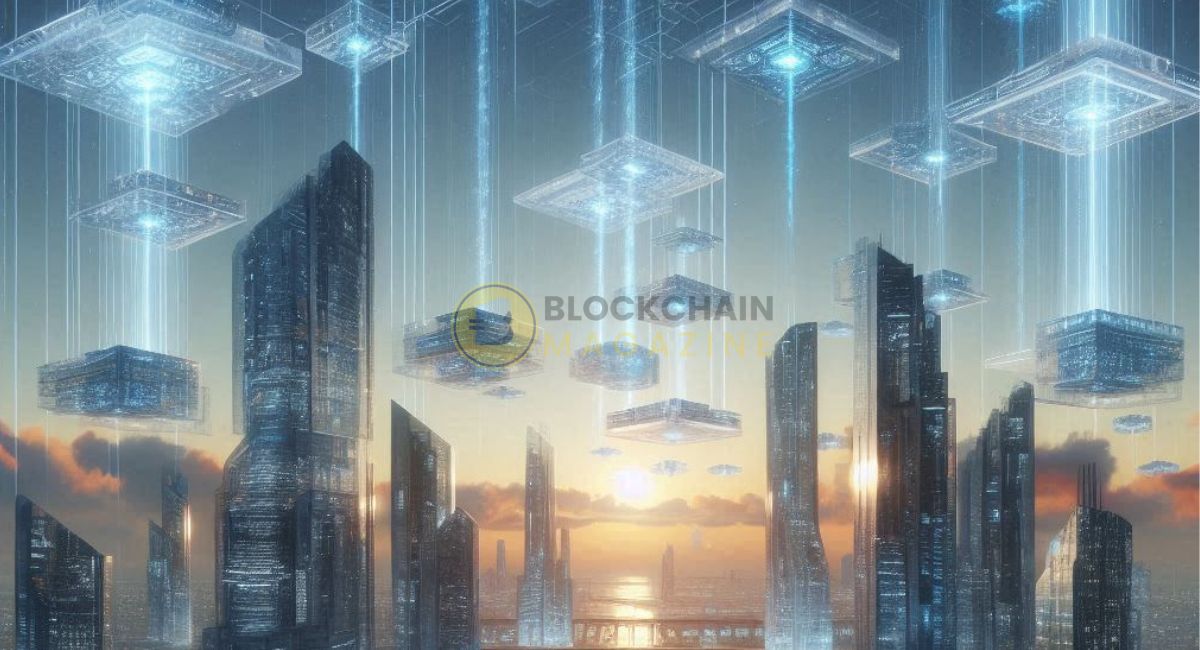Top 10 Ways Of Making Ethereum Layer 2 Solutions Surprisingly Cost Effective
Ethereum Layer 2 solutions are critical components designed to address the scalability challenges of the Ethereum blockchain. As Ethereum’s popularity has grown, its limitations, such as high gas fees and slower transaction processing times, have become apparent. Layer 2 solutions aim to mitigate these issues by moving some of the computation and transaction processing off the Ethereum mainnet, offering a more efficient and cost-effective environment.
One prominent type of Layer 2 solution is Optimistic Rollups. Optimistic Rollups operate on the premise of optimistic execution, meaning transactions are initially processed off-chain, and a cryptographic proof is submitted to the Ethereum mainnet only in the event of a dispute. This approach significantly reduces the gas fees and congestion on the Ethereum mainnet, allowing for faster and cheaper transactions.
Another notable category of Layer 2 solutions involves Zero-Knowledge Rollups. These solutions utilize advanced cryptographic techniques, like zero-knowledge proofs, to execute smart contracts off-chain while providing succinct proofs on-chain to validate the accuracy of the computations. Zero-Knowledge Rollups not only enhance scalability but also improve privacy by keeping sensitive transaction details confidential.
Ethereum Layer 2 solutions offer several advantages. Firstly, they dramatically reduce transaction costs, making decentralized applications (DApps) more accessible to users. This is particularly crucial for enabling microtransactions and fostering broader adoption. Secondly, these solutions significantly enhance transaction throughput, ensuring that the Ethereum network can handle a higher volume of transactions per second, addressing one of the primary scalability concerns.
Moreover, Layer 2 solutions contribute to a more sustainable and eco-friendly blockchain ecosystem. By offloading computational work to Layer 2 networks, the energy consumption associated with Ethereum transactions is reduced, aligning with the broader industry trend toward more environmentally friendly blockchain solutions.
Despite their advantages, Ethereum Layer 2 solutions also face challenges. The need for seamless integration with existing smart contracts and the potential centralization of certain implementations are among the issues that developers and the Ethereum community are actively working to address.
In conclusion, Ethereum Layer 2 solutions play a crucial role in addressing the scalability limitations of the Ethereum blockchain. By leveraging techniques like Optimistic Rollups and Zero-Knowledge Rollups, these solutions reduce transaction costs, improve throughput, and contribute to the sustainability of decentralized applications on the Ethereum network. As the Ethereum ecosystem evolves, Layer 2 solutions are poised to be instrumental in shaping the future of decentralized finance, NFTs, and various other blockchain-based applications.
Also, read- Your Ultimate Guide To The Cross Chain AI Hub With Ethereum
All about Ethereum layer 2 solutions
Ethereum Layer 2 solutions are off-chain scaling mechanisms designed to alleviate the scalability and high transaction fee issues on the Ethereum blockchain. These solutions aim to increase transaction throughput by moving some processing off the main Ethereum network while still maintaining the security and decentralization features. Here are some notable Ethereum Layer 2 solutions:
- Optimistic Rollups:
- Optimistic Rollups operate on the principle of optimistic execution. Transactions are initially processed off-chain on a separate layer, and only a summary, or rollup, is submitted to the Ethereum mainnet. This rollup acts as a cryptographic proof of the off-chain computations. If there is a dispute, users can provide the full data for verification. Optimistic Rollups significantly reduce gas fees and enhance scalability.
- zkSync:
- zkSync is a Layer 2 scaling solution that employs zk-rollup technology. It utilizes zero-knowledge proofs for efficient transaction validation on the Ethereum mainnet. zkSync enables fast and low-cost transactions, making it suitable for a variety of decentralized applications. The technology provides privacy benefits by allowing users to make transactions without revealing specific details on the main Ethereum chain.
- Arbitrum:
- Arbitrum is an optimistic rollup solution developed by Offchain Labs. It allows developers to deploy smart contracts on Layer 2 with Ethereum’s security guarantees. Arbitrum aims to improve scalability and reduce transaction fees by processing most computations off-chain. Developers can port their existing Ethereum smart contracts to Arbitrum with minimal changes.
- Optimism (formerly known as Optimistic Ethereum):
- Optimism is an implementation of Optimistic Rollups. It utilizes optimistic execution, allowing for fast and cost-effective transactions on Layer 2. Developers can deploy decentralized applications on Optimism, and users can experience improved transaction speeds while retaining the security assurances of the Ethereum mainnet.
- Loopring:
- Loopring is a Layer 2 scaling solution that uses zk-rollup technology. It focuses on decentralized exchanges (DEXs) and provides users with the ability to trade assets with reduced costs and faster transaction confirmation times compared to on-chain trading. Loopring aims to enhance the efficiency of decentralized trading while leveraging Ethereum’s security.
- Hermez:
- Hermez is a zk-rollup solution designed to improve the scalability of Ethereum by optimizing transaction processing. It aims to offer low-cost and fast transactions, making it suitable for applications like payments and token transfers. Hermez utilizes zero-knowledge proofs for transaction validation and privacy.
- StarkWare:
- StarkWare offers Layer 2 scaling solutions using zk-rollup technology. Their implementations aim to increase transaction throughput and reduce costs for various decentralized applications. StarkWare focuses on providing scalability solutions for both payments and smart contracts, contributing to a more scalable and efficient Ethereum ecosystem.
Top 10 ways of making Ethereum layer 2 solutions cost-effective

Making Ethereum Layer 2 solutions cost-effective is essential for encouraging widespread adoption and ensuring a sustainable blockchain ecosystem. Here are ten strategies to enhance the cost-effectiveness of Layer 2 solutions on Ethereum:
- Optimized Transaction Batching:
- Bundle multiple transactions into a single batch before submitting them to the Layer 2 solution. This reduces the overall transaction fees per operation, making it more cost-effective for users.
- Efficient Use of Storage:
- Optimize the use of storage by implementing data compression and pruning techniques. This helps in minimizing the storage requirements on the Layer 2 solution, resulting in lower costs for users.
- Gas Fee Predictability:
- Implement mechanisms to provide users with predictable gas fees. This allows users to plan their transactions more efficiently and avoids unexpected high costs, promoting user trust and adoption.
- Gas Fee Subsidies:
- Explore options for subsidizing gas fees to attract users and developers to the Layer 2 solution. Subsidies can be funded through mechanisms like token inflation or community grants, making the solution more economically viable.
- Dynamic Fee Scaling:
- Implement dynamic fee scaling based on network demand. When the network is congested, fees can be adjusted to encourage users to transact during periods of lower demand, optimizing cost efficiency.
- User Incentives:
- Introduce reward mechanisms or loyalty programs for users who actively participate in the Layer 2 solution. Incentivizing users with rewards or reduced fees encourages adoption and user engagement.
- Integration with Ethereum 2.0:
- Explore integration possibilities with Ethereum 2.0. As Ethereum transitions to a proof-of-stake consensus mechanism, the overall network fees may decrease. Integrating Layer 2 solutions with Ethereum 2.0 can lead to further cost reductions.
- Smart Contract Optimization:
- Optimize smart contracts deployed on Layer 2 for efficiency. This includes reducing the complexity of contract logic and minimizing storage usage. Well-optimized contracts consume fewer resources, translating to lower costs for users.
- Off-Peak Transaction Incentives:
- Introduce incentives for users to perform transactions during off-peak hours. This can help distribute network usage more evenly, avoiding congestion during peak times and reducing fees for users.
- Cross-Layer Token Swapping:
- Enable seamless token swapping between Layer 2 and Layer 1. Users can choose the most cost-effective layer for their transactions based on current fee conditions. This flexibility encourages efficient use of Layer 2 solutions.
🚀 Brace yourselves for the extraordinary plans unfolding at Athene Network in the short term of 2024🚀
— Athene Network (@Athene_Network) January 19, 2024
✨ Athene Network – an Ethereum Layer 2 mainnet that is developing various products in 2024.
More details: https://t.co/YTnPLziphK
📌 Join X and share pinned post to get…
Benefit of Ethereum layer 2 solutions

Ethereum Layer 2 solutions offer a range of benefits that address some of the key challenges faced by the Ethereum blockchain. Here are several advantages of implementing Layer 2 solutions:
- Scalability:
- Layer 2 solutions significantly improve the scalability of the Ethereum network by moving a substantial portion of transaction processing off the main blockchain. This alleviates congestion and allows for a higher volume of transactions to be processed simultaneously.
- Reduced Transaction Costs:
- By offloading computational work to Layer 2 networks, transaction costs are substantially reduced. Users benefit from lower fees, making microtransactions and everyday transactions more cost-effective compared to executing them directly on the Ethereum mainnet.
- Faster Transaction Confirmation:
- Layer 2 solutions offer faster transaction confirmation times as most of the transaction processing occurs off-chain. This is particularly beneficial for applications where quick confirmation is crucial, such as decentralized exchanges (DEXs) and payments.
- Improved User Experience:
- The reduction in gas fees and faster confirmation times contribute to an overall improved user experience. Users can interact with decentralized applications (DApps) and execute transactions without experiencing the delays and high costs often associated with on-chain transactions.
- Interoperability:
- Layer 2 solutions facilitate interoperability between different blockchain networks. Assets and data can be securely transferred between Layer 2 and Layer 1, enabling a more connected and collaborative blockchain ecosystem.
- Privacy Enhancements:
- Certain Layer 2 solutions, such as zk-rollups, leverage advanced cryptographic techniques to enhance user privacy. By performing transactions off-chain and submitting succinct proofs on-chain, sensitive transaction details can be kept confidential.
- Energy Efficiency:
- Layer 2 solutions contribute to a more energy-efficient blockchain ecosystem. By reducing the computational load on the Ethereum mainnet, Layer 2 solutions help lower overall energy consumption associated with transaction processing.
- Economic Incentives:
- Layer 2 solutions often introduce economic incentives, such as lower fees or token rewards, to encourage users to adopt and participate in the off-chain scaling solution. These incentives can drive user engagement and adoption.
- Support for Diverse Use Cases:
- Layer 2 solutions are versatile and support a wide range of decentralized applications and use cases, including decentralized finance (DeFi), non-fungible tokens (NFTs), gaming, and more. This flexibility expands the applicability of blockchain technology to various industries.
- Relief for Ethereum Mainnet:
- By offloading transactions and computations to Layer 2, Ethereum mainnet experiences reduced congestion, allowing it to focus on critical operations and ensuring a smoother operation of the entire network.
Conclusion
In conclusion, Ethereum Layer 2 solutions represent a transformative step forward for the Ethereum blockchain, addressing critical challenges and unlocking new possibilities for decentralized applications (DApps) and users. The benefits of Layer 2 solutions are multifaceted, with a significant impact on scalability, transaction costs, confirmation times, and overall user experience.
The scalability improvement achieved by Layer 2 solutions is fundamental for the continued growth of the Ethereum network. By efficiently offloading a substantial portion of transaction processing and computations to Layer 2, these solutions mitigate congestion on the Ethereum mainnet, enabling it to handle a higher volume of transactions simultaneously.
The reduction in transaction costs is a key advantage that makes blockchain technology more accessible and economically viable for a broader user base. Layer 2 solutions contribute to lower fees, particularly beneficial for microtransactions and everyday transactions, fostering greater adoption and utility of decentralized applications.
Faster transaction confirmation times are a hallmark of Layer 2 solutions. Users can experience quicker interactions with DApps, contributing to a more responsive and user-friendly environment. This speed is particularly crucial for applications such as decentralized exchanges and payments.
Privacy enhancements, such as those provided by zero-knowledge rollups, contribute to the confidentiality of transactions. This is pivotal for applications where user privacy is paramount, addressing concerns related to the exposure of sensitive transaction details on the blockchain.
The energy efficiency brought about by Layer 2 solutions aligns with the broader industry trend towards sustainability. By reducing the computational load on the Ethereum mainnet, Layer 2 solutions contribute to a more environmentally friendly blockchain ecosystem.
Economic incentives introduced by Layer 2 solutions, such as lower fees and token rewards, play a role in driving user engagement and adoption. These incentives create a positive feedback loop, encouraging more users to participate in the off-chain scaling solution.
The support for diverse use cases showcases the versatility of Layer 2 solutions. From decentralized finance (DeFi) and non-fungible tokens (NFTs) to gaming and beyond, these solutions broaden the applicability of blockchain technology across various industries.
In essence, Ethereum Layer 2 solutions not only address the immediate challenges faced by the Ethereum network but also lay the foundation for a more scalable, efficient, and inclusive blockchain ecosystem. As the technology continues to evolve, Layer 2 solutions play a pivotal role in shaping the future of decentralized applications and contributing to the widespread adoption of blockchain technology.
Stay informed with daily updates from Blockchain Magazine on Google News. Click here to follow us and mark as favorite: [Blockchain Magazine on Google News].
Get Blockchain Insights In Inbox
Stay ahead of the curve with expert analysis and market updates.
latest from tech
Disclaimer: Any post shared by a third-party agency are sponsored and Blockchain Magazine has no views on any such posts. The views and opinions expressed in this post are those of the clients and do not necessarily reflect the official policy or position of Blockchain Magazine. The information provided in this post is for informational purposes only and should not be considered as financial, investment, or professional advice. Blockchain Magazine does not endorse or promote any specific products, services, or companies mentioned in this posts. Readers are encouraged to conduct their own research and consult with a qualified professional before making any financial decisions. The featured image used is just a creative depiction of the title and it does not intend to hurt sentiments of any person or institution. If it hurts anyone sentiments, please do not hesitate to reach out to Blockchain Magazine.

 Bitcoin
Bitcoin  Ethereum
Ethereum  XRP
XRP  Tether
Tether  Solana
Solana  USDC
USDC  Dogecoin
Dogecoin  Cardano
Cardano  Lido Staked Ether
Lido Staked Ether  TRON
TRON  Chainlink
Chainlink  Avalanche
Avalanche  Wrapped stETH
Wrapped stETH  Wrapped Bitcoin
Wrapped Bitcoin  Toncoin
Toncoin  Hedera
Hedera  Stellar
Stellar  Sui
Sui  Shiba Inu
Shiba Inu  WETH
WETH  LEO Token
LEO Token  Polkadot
Polkadot  Litecoin
Litecoin  Bitcoin Cash
Bitcoin Cash  Bitget Token
Bitget Token  Hyperliquid
Hyperliquid  USDS
USDS  Uniswap
Uniswap  Wrapped eETH
Wrapped eETH  Ethena USDe
Ethena USDe  Pepe
Pepe  NEAR Protocol
NEAR Protocol  Official Trump
Official Trump  Aave
Aave  MANTRA
MANTRA  Aptos
Aptos  Ondo
Ondo  Internet Computer
Internet Computer  Monero
Monero  WhiteBIT Coin
WhiteBIT Coin  Ethereum Classic
Ethereum Classic  Mantle
Mantle  Dai
Dai  Cronos
Cronos  POL (ex-MATIC)
POL (ex-MATIC)  Bittensor
Bittensor  Render
Render 





